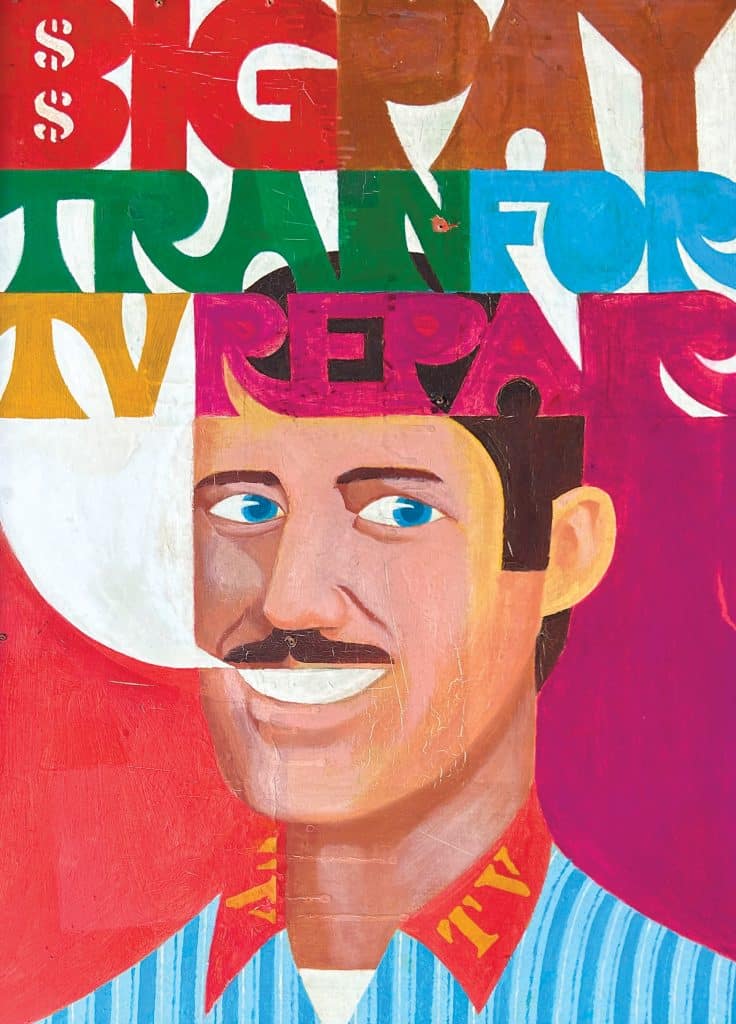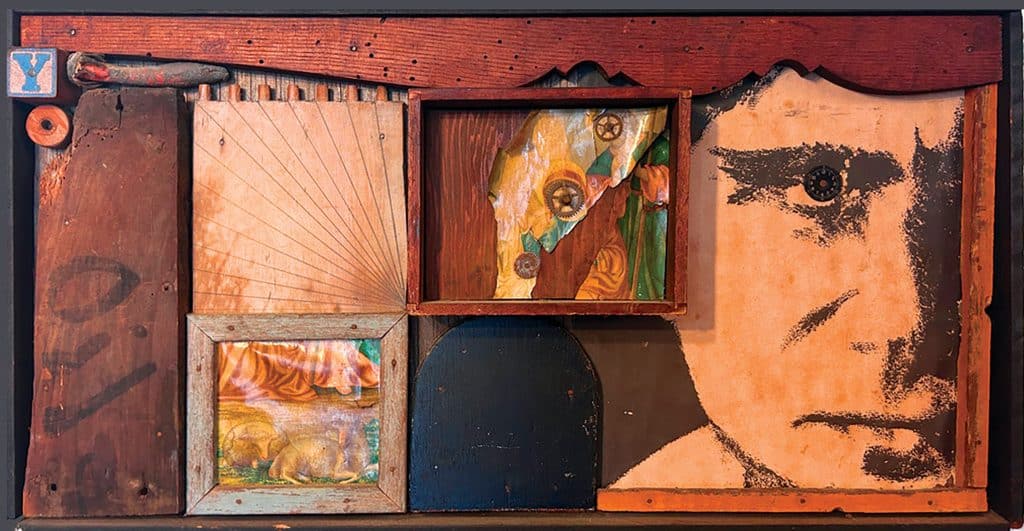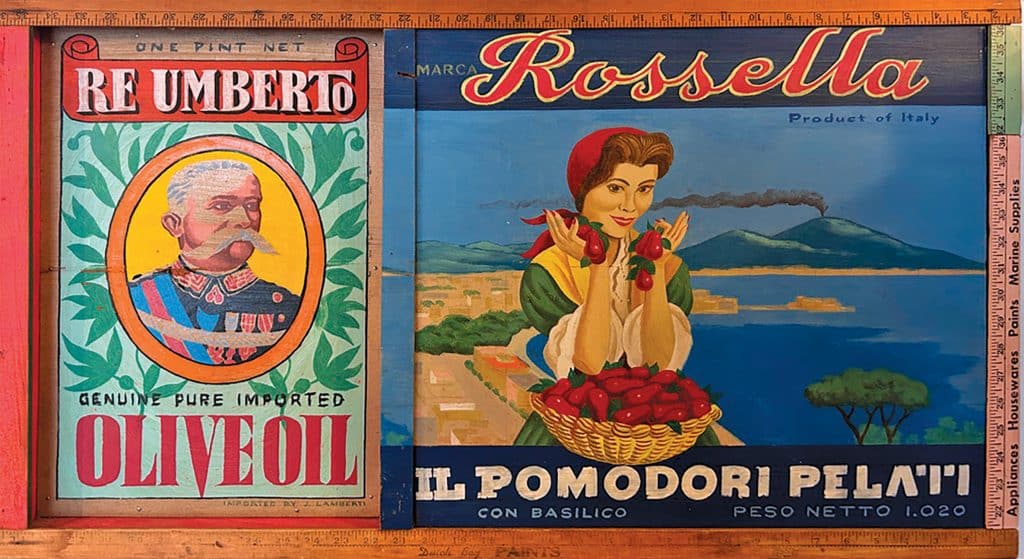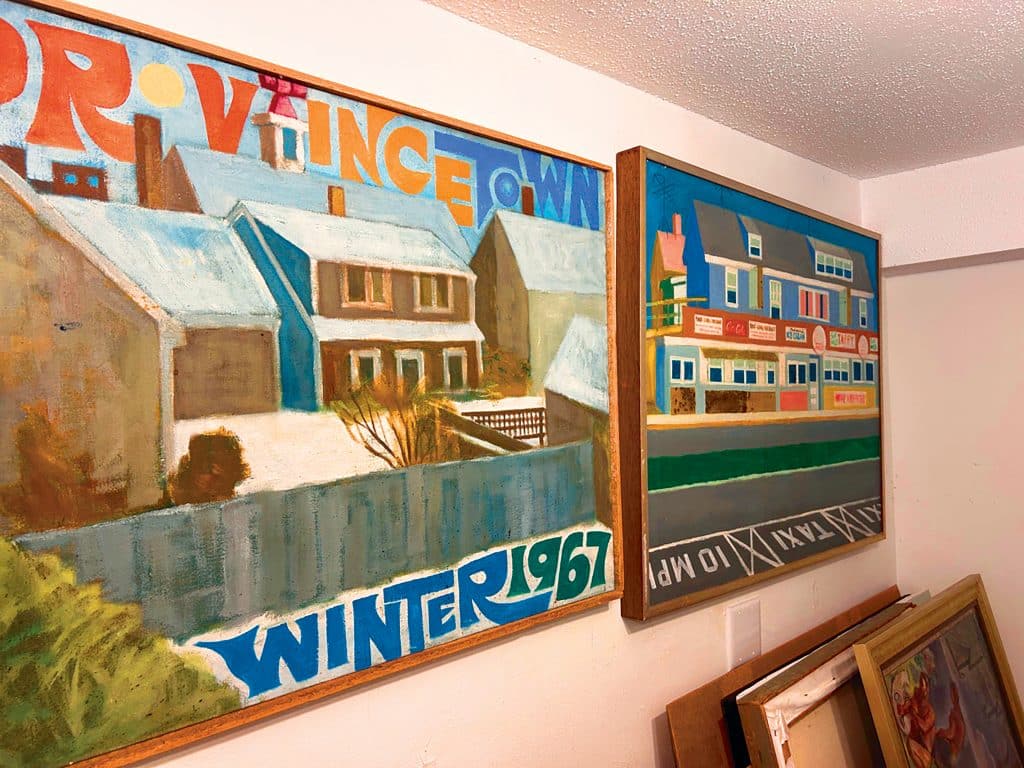*Winter, 1967 and Foot Long by Jackson Lambert
by Steve Desroches
Stepping in to the White Horse Inn was akin to Doctor Who jumping into another dimension or Alice falling down a rabbit hole into Wonderland. While the only constant is change, there are the occasional reminders, especially in Provincetown, of the way things used to be, monuments to the legacy of this wild and wonderful sand bar way out in the North Atlantic. Frank Schaefer opened the inn, named after a famous bar in Greenwich Village, in 1963. The nascent innkeeper was introduced to Provincetown the year before by friend and artist Jackson Lambert. The two pals created guest accommodations that reflected the bohemian culture of Provincetown in a guest house that was funky and fun with no pretense, and with a character that came from a place of authenticity.
Sixty years later, after running the inn on her own since Schaefer’s death in 2007, his widow Mary J. Martin sold the inn at 500 Commercial Street, marking the end of an era. But before moving off-Cape, she thoughtfully went through the Provincetown landmark that had hosted guests like Norman Mailer, Joyce Carol Oates, Grace Paley, John Waters, and Gore Vidal, as while it functioned as an inn, over the years it had also become a living museum. And of the art and artifacts in the White Horse Inn, much of it was the work of Lambert.

Martin contacted the Bakker Gallery, founded by Jim Bakker, a well-respected auctioneer and art dealer with an expertise in Provincetown art, whose gallery space reflects that extensive knowledge. Over this past winter, Spencer Keasey, director of the gallery and auction house, went to the White Horse Inn and was gobsmacked at what he found. Everywhere he looked there were pieces by Lambert, some outside, others hanging in guest rooms. Paintings, mixed media assemblage and collages, commercial signs, and sculptures. Bright, bold, and daring, the work has hints of old-school sideshow posters with a refined sense of whimsy. As Keasey walks through the storage space next to the gallery he spins around a time or two with a smile and his arms outstretched with Lambert’s work filling the room.
“It’s all so crazy,” laughs Keasey. “The more and more I looked at it all in the inn I knew this had to be a show. As can happen here, with all the artists that come through town, people can start to be forgotten. And most of this work was only seen by guests at the White Horse. This is really exciting to show this work. I hope it brings out people who knew him so the gaps in his story can hopefully be filled.”

Born on a farm in Illinois in 1919, Lambert studied art at the University of Illinois where one of his professors was LaForce Bailey, who introduced the young Lambert to Provincetown in the 1930s as Bailey had been a student of Charles Hawthorne, the founder of the Cape School of Art. After serving in the Army in World War II, in which he participated in D-Day landing on Omaha Beach, Lambert returned to the United States and continued his career in art, visiting Provincetown in the summers. He and his wife, Carmen Felt, moved to Provincetown year-round in 1966. In addition to his artistic entrepreneurial spirt with the White Horse Inn, he also helped his friends Anton “Napi” and Helen Van Dereck open Napi’s restaurant, which would become a beloved town dining staple. And like with the White Horse Inn, Lambert’s artistic fingerprints were all over Napi’s. All the tile work along Freeman Street outside the restaurant is Lambert’s work, as is the mural on the pump house across the street, named the Douglas N. Trumbo Memorial, for the man’s service to the Provincetown Rescue Squad, as documented in David Dunlap’s project Building Provincetown.
“He really has quite the legacy in town,” says Keasey. “But I think people will be very surprised by this work.”

Lambert also drew advertisements for Napi’s that appeared in The Advocate and here in Provincetown Magazine, and he also wrote a column called Jackson Hole in the local paper. He made tourist souvenir books and painted elaborate signs for art openings and theatrical productions. By all surviving accounts Lambert was a bon vivant and much loved in Provincetown up until his death at 91 in 2011. But the same historical record shows no signs of any art exhibitions or serious inquiry into his work. Keasey says there’s a sense that some of the work was meant to be ephemeral or commercial in nature, and that the pieces like those on display in the show at the Bakker Gallery were meant for personal satisfaction or for gifts to friends. And now his work will hang on the wall in a gallery that also shows works by some of the art colony greats like Arthur Cohen, Nancy Ellen Craig, and William L’Engle. But Keasey notes that so many of those artists produced a large body of work. When it comes to Lambert, the rarity adds to the mystique.
“This may very well be it,” says Keasey of the work assembled for the show. “I hope more comes to light after the show, but who knows. This may be most of all that’s left of his work as an artist.”
An exhibition of the work of Jackson Lambert is at the Bakker Gallery, 359 Commercial St., Provincetown, July 12 – 28, with an opening reception on Friday, July 12, 7 p.m. The Bakker Gallery is open Saturday through Monday, and Thursday, 12 p.m. to 5 p.m. and Friday, 2 p.m. to 8 p.m. For more information call 508.413.9758 or visit bakkerproject.com.
*Most of Jackson Lambert’s works were untitled, but for the show, Bakker Gallery has titled them.











